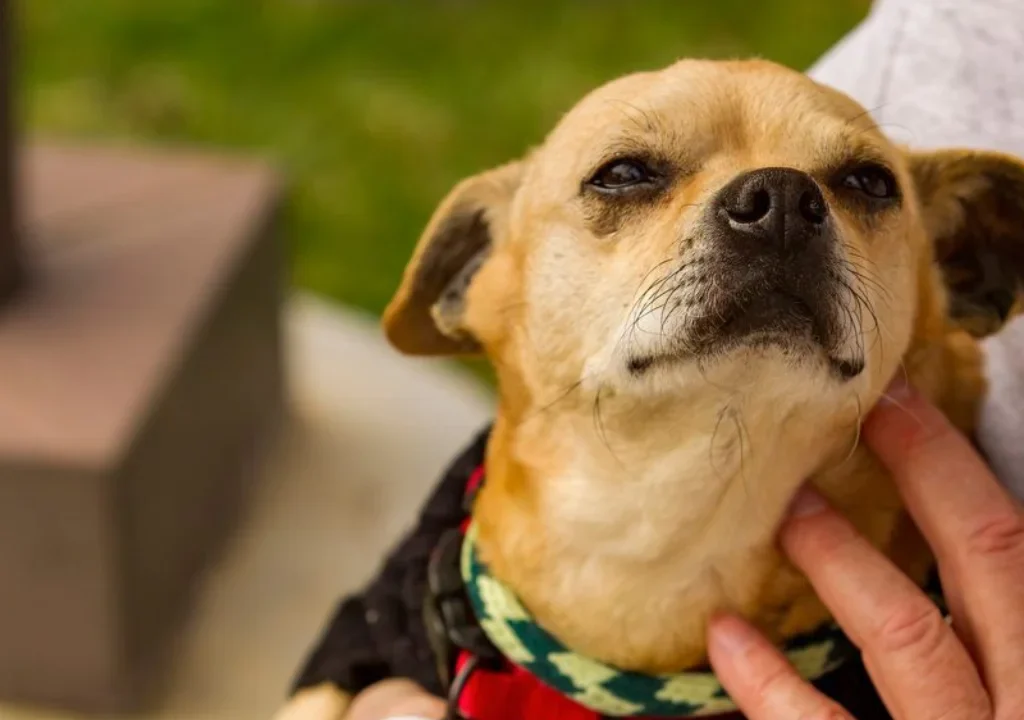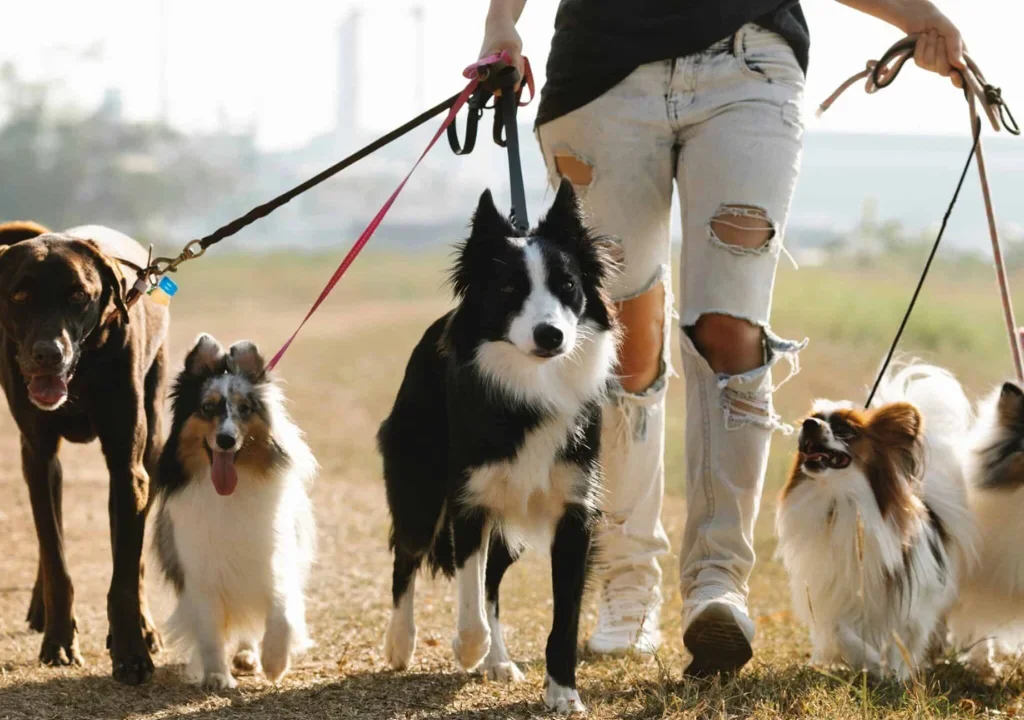
Have you ever caught your furry friend obsessively licking their paws and wondered if this behavior is normal? While occasional paw licking is completely natural, excessive licking could signal something more serious. Understanding why do dogs lick their paws can help you determine when it’s just grooming and when it’s time to take action.
This comprehensive guide reveals the most common reasons behind paw licking behavior. You’ll learn how to identify warning signs and discover proven solutions to keep your dog comfortable and healthy.
Is Paw Licking Normal in Dogs?
Before diving into the reasons, it’s important to understand that some paw licking is perfectly normal. Dogs naturally groom themselves by licking their paws, just like cats do. However, when this behavior becomes excessive, frequent, or obsessive, it usually indicates an underlying issue that needs attention.
Most of the time, it’s pretty normal, especially if it’s only occasional licking. The key is recognizing when normal grooming crosses the line into problematic behavior.
7 Main Reasons Why Dogs Lick Their Paws
1. Allergies: The Leading Culprit
The most common reason for a dog to constantly lick their paws is an allergic reaction in the skin. Allergies affect millions of dogs worldwide and can cause intense itching that drives them to lick their paws for relief.
Types of allergies that cause paw licking:
- Food allergies: Common triggers include chicken, beef, dairy, and grains
- Environmental allergies: Pollen, dust mites, mold, and grass
- Contact allergies: Cleaning products, lawn chemicals, and certain fabrics
Dogs with allergies often show additional symptoms like red, swollen paws, watery eyes, or skin rashes. The licking provides temporary relief but can actually make the irritation worse over time.
2. Injuries and Physical Irritation
Your dog might start licking because they have a thorn or burr stuck between their toes, or a cut on their paw pad, or a bee sting, or torn nail. Even minor injuries can cause significant discomfort that prompts excessive licking.
Common paw injuries include:
- Cuts or scrapes from rough surfaces
- Foreign objects stuck between toes
- Insect bites or stings
- Burned paw pads from hot pavement
- Torn or broken nails
- Salt or chemical irritation from winter roads
If your dog suddenly starts licking one specific paw, carefully examine it for visible injuries or foreign objects.
3. Skin Conditions and Infections
Various skin conditions can make your dog’s paws itchy and uncomfortable. Yeast infections are particularly common, especially in dogs with allergies or those who spend time in moist environments.
Common skin issues causing paw licking:
- Yeast infections: Thrive in warm, moist areas between toes
- Bacterial infections: Often secondary to excessive licking
- Dry skin: Caused by low humidity or over-bathing
- Dermatitis: Inflammation from various irritants
Yeast infections can be treated with a solution of 3:1 water and apple cider vinegar, soaking your pup’s paws for 10 minutes.
4. Boredom and Anxiety
Boredom, anxiety, and other behavioral changes can cause chronic paw licking. Stress and fear can lead to new behaviors, and paw licking might have started as a self-soothing habit.
Dogs may develop compulsive licking behaviors when they’re:
- Left alone for long periods
- Experiencing separation anxiety
- Feeling stressed or fearful
- Lacking mental stimulation
- Dealing with changes in routine
This type of licking often occurs during specific times, like when you’re preparing to leave the house or during thunderstorms.
5. Parasites and Pest Problems
External parasites can cause intense itching that leads to excessive paw licking. While fleas are the most common culprit, other parasites can also be responsible.
Parasites that cause paw licking:
- Fleas (most common)
- Mites
- Ticks
- Mange mites
These tiny pests can hide between your dog’s toes or on their paw pads, making detection challenging without close inspection.
6. Dry or Cracked Paw Pads
Just like human skin, your dog’s paw pads can become dry and cracked, especially during winter months or in arid climates. This dryness creates discomfort that your dog tries to relieve through licking.
Factors contributing to dry paws:
- Low humidity environments
- Excessive bathing
- Harsh weather conditions
- Walking on rough surfaces
- Age-related skin changes
7. Hormonal Imbalances
Less commonly, hormonal issues can contribute to excessive paw licking. Conditions like hypothyroidism can cause skin problems that make your dog’s paws itchy and uncomfortable.
Warning Signs: When to Be Concerned
While occasional paw licking is normal, watch for these red flags that indicate why do dogs lick their paws excessively:
Immediate veterinary attention needed:
- Constant licking that interferes with daily activities
- Red, swollen, or bleeding paws
- Limping or favoring one paw
- Strong odor from the paws
- Open wounds or sores
- Hair loss around the paws
- Discharge or pus
Behavioral red flags:
- Licking that continues despite distractions
- Licking at specific times (anxiety-related)
- Aggressive behavior when you try to stop the licking
- Loss of appetite or lethargy alongside paw licking
Proven Solutions to Stop Excessive Paw Licking
Medical Treatments
For allergies: Anti-inflammatory medications like Apoquel, Atopica, fatty acid supplements, or antihistamines can be very effective in reducing itching.
For infections:
- Antibiotics for bacterial infections
- Antifungal medications for yeast infections
- Medicated shampoos and topical treatments
For injuries:
- Clean their paws with a pet-safe antiseptic, such as warm, salty water or diluted Betadine solution.
- Protective bandaging when necessary
- Pain management as prescribed by your vet
Home Remedies and Natural Solutions
For dry paws: If dryness is the reason for your dog licking its paws, then a simple moisturizer or balm might be the best solution. Choose products made with natural ingredients and designed specifically for dogs.
Soothing oatmeal soak: Make a solution of ground-up dry oats and warm water. Soak the paws for 10 minutes in the tub.
Baking soda paste: Create a soothing baking soda paste by mixing equal parts baking soda and water until you achieve a thick, spreadable consistency.
Behavioral Solutions
For anxiety and boredom: Invest in a variety of toys, puzzles, and interactive games to keep your dog mentally engaged and divert their attention from excessive paw licking.
Additional strategies:
- Increase daily exercise and mental stimulation
- Maintain consistent routines
- Use calming supplements if recommended by your vet
- Consider professional dog training for severe anxiety
Prevention Tips: Keeping Your Dog’s Paws Healthy
Daily paw care routine:
- Inspect paws regularly for injuries or foreign objects
- Keep nails trimmed to prevent overgrowth
- Clean paws after walks, especially in dirty or chemical-treated areas
- Regular paw cleaning is essential to remove potential irritants or allergens.
Environmental management:
- Use pet-safe cleaning products in your home
- Rinse paws after walks on salted winter roads
- Provide adequate humidity during dry seasons
- Create a calm, stress-free environment
Nutrition support:
- Feed a high-quality diet appropriate for your dog’s needs
- Consider omega-3 supplements for skin health
- Discuss allergy-friendly diets with your veterinarian
When Professional Help is Essential
Don’t wait to seek veterinary care if your dog’s paw licking becomes excessive or is accompanied by other symptoms. Early intervention often leads to better outcomes and prevents complications.
Schedule a vet appointment if:
- Home remedies don’t improve the situation within a week
- The licking behavior is getting worse
- You notice signs of infection or injury
- Your dog shows signs of pain or discomfort
- The behavior is affecting your dog’s quality of life
Your veterinarian can perform diagnostic tests to identify the root cause and develop an effective treatment plan tailored to your dog’s specific needs.
The Bottom Line: Understanding Why Dogs Lick Their Paws
Excessive paw licking in dogs is rarely just a bad habit. Whether it’s allergies, injuries, infections, or behavioral issues, there’s usually an underlying reason that needs to be addressed. By understanding why do dogs lick their paws and recognizing the warning signs, you can take prompt action to help your furry friend feel more comfortable.
Remember, every dog is different, and what works for one may not work for another. The key is working closely with your veterinarian to identify the specific cause and develop an appropriate treatment plan. With patience and proper care, most dogs can overcome excessive paw licking and return to their happy, healthy selves.
Don’t ignore persistent paw licking – your dog is trying to tell you something important about their health and well-being.
Frequently Asked Questions
About the Author:
Hi, I’m Emilia! I’ve been passionate about sharing valuable pet care insights for over 10 years, and I love helping fellow pet owners provide the best care for their furry companions. My goal is to make pet care information accessible and helpful for everyone. Please remember to always consult your veterinarian before implementing any health advice or treatments for your pet.

